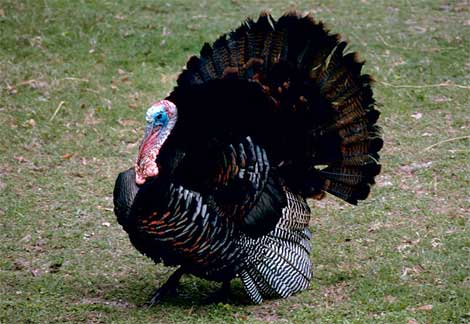
August 6, 2008

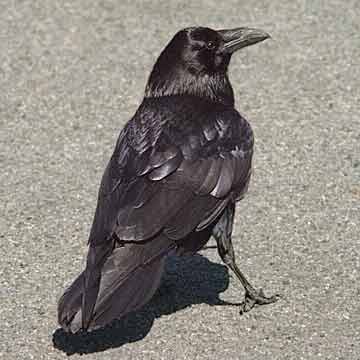
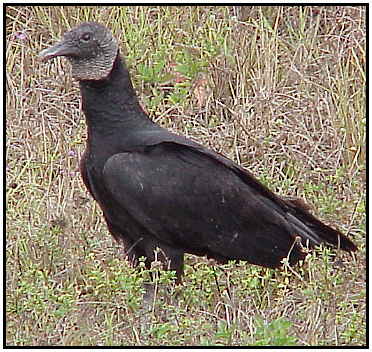
Are these the leading suspects? What kind of new winged attack is coming through a ground assault?
Reporter Beverley Ware of the Chronicle Herald in Nova Scotia writes of “‘Damn big bird’ giving some South Shore folks a fright ~ Enormous winged creature rushes, swoops at Crousetown residents,” for Wednesday, August 6, 2008.
Myles Rafuse carries a big stick on his daily walks after a “damn big bird” came at him during a recent stroll after church.
“I had quite an experience with it, I tell you,” said the Crousetown resident who turns 80 in a couple of weeks.
In fact, he wasn’t the only one to have a close encounter with the jet black bird.
“It was enormous really,” said Goldie Stewart, who said the bird barely missed her scalp as it swooped down at her while she was hanging out laundry.
“Maybe it was after my white hair,” chuckled the 73-year-old.
Mr. Rafuse was the first to have a close encounter with the gargantuan bird about a month ago. He was walking on a dirt road near his home southwest of Bridgewater after church on a Sunday.
“I was going along and it got kind of warm so I took my jacket off and carried it over my arm.”
Then he heard something in the woods along the side of the road. “This huge bird come at me on the road and made a rush at me.”
He said it was black as coal and stood “at least two feet high and it was wide. . . . The only thing that saved me from not getting tangled up was I kept hitting it with my jacket.” He said he ran backwards because he was afraid to turn his back on the bird.
He said the bird never flew, it just ran at him from the side of the road making a “howling like” noise with its wings partially out from its body. Then it suddenly turned and ran back into the woods.
“The damn thing could move quite swiftly,” but Mr. Rafuse said in that moment he moved pretty quickly, too. “It was kind of scary for a while.”
He hasn’t been up that road since and now carries a 1.5-metre-long stick with him on his daily walks.
About a week after that happened, Mrs. Stewart said she was in her driveway hanging out laundry when a massive black bird swooped down so close she felt the rush of the air from its wings on top of her head.
“If he would have put his claws down he would have struck the top of my head. I just stopped, it scared me so.”
It made a crying-like sound, she said. “It was weird.”
Initial reports were that it could have been a raven, a cormorant or a northern goshawk. Randy Milton is acting director of wildlife for the provincial Department of Natural Resources. He said it sounds too big to be a raven, cormorants do not go to inland wooded areas and a goshawk is grey.
Given its size and the fact the bird ran at him, Mr. Milton said it could be a turkey. “People have released turkeys in the province, not legally.”
They are not true wild turkeys, but a variant of a domestic turkey. “That is the only thing I could possibly think of that size,” Mr. Milton said.
A goshawk has more stealth and would attack from the rear, and neither a raven nor a cormorant would come running at someone from the ground.
“Turkeys can run quite fast,” and Mr. Milton said they can fly and do roost in trees.
For his part, Mr. Rafuse said the behemoth black bird hasn’t been spotted since Mrs. Stewart stood in her driveway and watched it fly off over a brook. But he hasn’t been back to that road since. “I don’t really want to unless I know it’s gone.”
Crousetown is a small rural community about 15 kilometres south of Bridgewater.

Osceola or Florida Turkey – Meleagris gallopavo osceola

Domestic turkey – Meleagris gallopavo
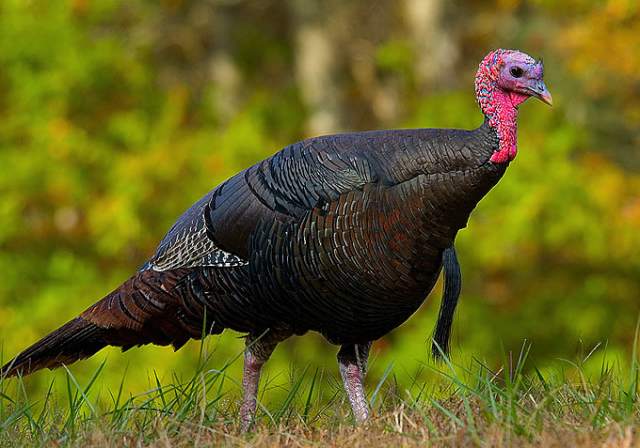
Eastern Wild Turkey – Meleagris gallopavo silvestris
The ground-based attacks certainly do suggest a turkey of some kind in this newest “Bridgewater Triangle.” Maine has “wild turkeys,” and it would seem reasonable that Nova Scotia might have some too.
Found that there are records of turkeys in Nova Scotia (mounted specimens below):
Description: 2 Wild Turkeys from Canada; Case 11 of Birds Mounted by Thomas J Egan for the Paris Exhibition ?
Subject: Animals; Birds; Taxidermy; Egan, T.J.
Coverage: (Geographic) Canada; Nova Scotia; Halifax ?
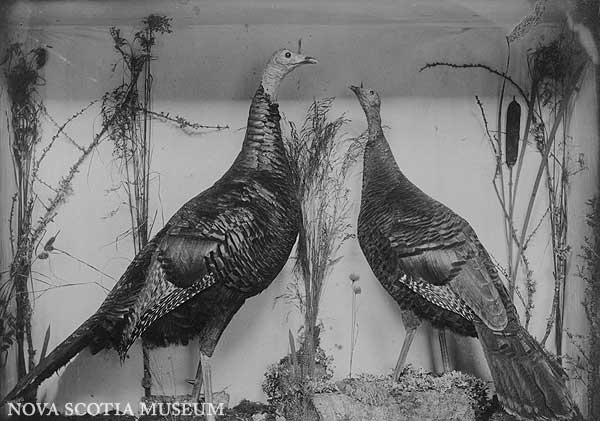
Another candidate: The Black Vulture (Coragyps atratus) – below – has four records in Nova Scotia. One killed at Pugwash, Cumberland County, on 12 January 1896 was sent to taxidermist T.J. Egan, in Halifax where it was examined by Piers (1897). Another killed at Owl’s Head, Halifax County, on 1 December 1918 was sent to taxidermist L.A. Purcell, in Dartmouth (Piers’ notes). The third was seen at Linacy, Pictou County, on 22 July 1936 by Alban Brown, who became familiar with this species and the following one when he lived in Florida before coming to Nova Scotia. The fourth was well studied by Betty June and Sidney Smith at Cape Sable one autumn in the early sixties.

How about a raven?

And less likely, a goshawk:
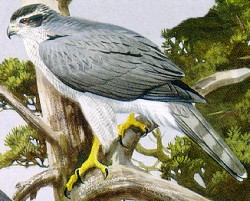
Thanks to Frank W. Norwood for forwarding this initial story.
Some turkey images from Coquina Daily.
About Loren Coleman
Loren Coleman is one of the world’s leading cryptozoologists, some say “the” leading living cryptozoologist. Certainly, he is acknowledged as the current living American researcher and writer who has most popularized cryptozoology in the late 20th and early 21st centuries.
Starting his fieldwork and investigations in 1960, after traveling and trekking extensively in pursuit of cryptozoological mysteries, Coleman began writing to share his experiences in 1969. An honorary member of Ivan T. Sanderson’s Society for the Investigation of the Unexplained in the 1970s, Coleman has been bestowed with similar honorary memberships of the North Idaho College Cryptozoology Club in 1983, and in subsequent years, that of the British Columbia Scientific Cryptozoology Club, CryptoSafari International, and other international organizations. He was also a Life Member and Benefactor of the International Society of Cryptozoology (now-defunct).
Loren Coleman’s daily blog, as a member of the Cryptomundo Team, served as an ongoing avenue of communication for the ever-growing body of cryptozoo news from 2005 through 2013. He returned as an infrequent contributor beginning Halloween week of 2015.
Coleman is the founder in 2003, and current director of the International Cryptozoology Museum in Portland, Maine.
Filed under Breaking News, Cryptotourism, CryptoZoo News, Cryptozoologists, Cryptozoology, Weird Animal News, Winged Weirdies